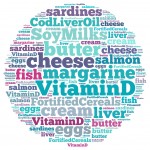
A link between vitamin D and dental caries was suggested back in the 1920s as it has an important role in calcium and phosphate metabolism. The aim of this study was to review the available trial data on supplementation with vitamin D for dental caries prevention compared with no such supplementation, in any population.
The databases, JSTOR, PubMed, Web of Science, and the Cochrane Central Register of Controlled Trials were searched for prospective controlled clinical trials (CCTs) of supplemental dietary vitamin D or ultraviolet (UV) radiation that reported; caries incidence, follow-up time included a control group and information on group assignment. Trials with surrogate endpoints (salivary or microbiological) were excluded. Trial quality was quantified using a 21-item questionnaire.
- 24 CCTs were included involving 2827 children. The majority (22) being conducted between the two world wars the most recent conducted in 1989.
- Analyses suggest that vitamin D supplementation is associated with a 47% reduced risk of caries. (Relative Risk, 0.53 (95% CI, 0.43–0.65).
[table id=38 /]
- Egger’s test for publication bias was highly significant
The author concluded
….this systematic review of CCTs suggests that vitamin D exposures in early life may play a role in caries prevention.
Comment
There is currently an increase in interest in Vitamin D in health care, but the majority (22 out of 24) of the studies included in this review were published 60 years ago and even the most recent is now 20 years old. At that time caries prevalence was higher in most populations and as noted by the reviews author;
differences in nutrition, fluoride exposures, and lifestyle factors make inferences from one time era to another tenuous.
Publication bias was detected suggesting that negative studies were not reported; this could have an important impact, as could the overall quality of the included studies. The included studies showed significant heterogeneity with the author noting that by eliminating the CCTs at higher risk of bias there was a reduction in the I2 heterogeneity test from 72% to 49%. It would have been interesting to indicate what impact this had on the overall relative risk presented. Although, the meta-regression performed to look at study characteristics suggested that low quality studies decreased the effectiveness of vitamin D!
A 2004 review of caries risk factors in children by Harris et al, which only included studies from 1966 onwards, identified some 106 factors associated with caries. They identified 29 dietary factors but did not include vitamin D.
Links
Hujoel, P. P. (2012), Vitamin D and dental caries in controlled clinical trials: systematic review and meta-analysis. Nutrition Reviews. doi: 10.1111/j.1753-4887.2012.00544.x
Harris R, Nicoll AD, Adair PM, Pine CM. Risk factors for dental caries in young children: a systematic review of the literature. Community Dent Health.2004 Mar;21(1 Suppl):71-85. Review. PubMed PMID: 15072476.

[…] Dental Elf – 20th Nov 2012 – Review revisits old evidence linking vitamin D and dental c… […]